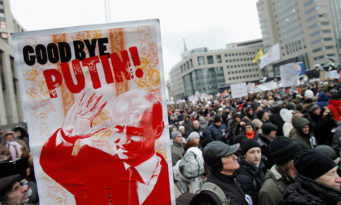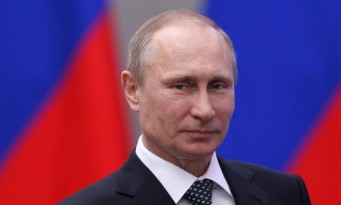Unravelling Yugoslavia: From the Slavs to Word War Two
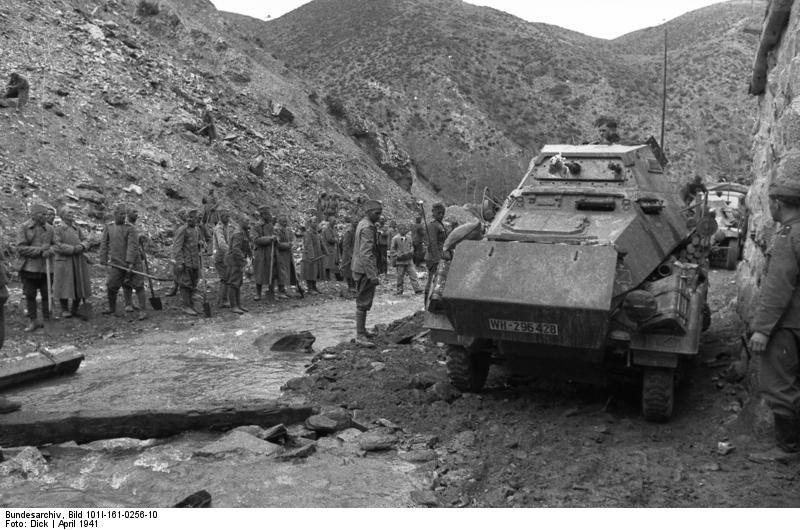
- By manuel stanescu
The term “Yugoslavia” means “the land of the Southern Slavs”, and the ideal of unification spread rapidly in the region.
For an apparently artificial political construct, Yugoslavia had quite a lengthy existence.
In the first part of a brief historical unravelling of Yugoslavia we will take a look at the Roman - Byzantine borderland. The historical timeline will span the Ottoman Empire and the Hapsburg Empire reaching the creation of Yugoslavia in 1929. World War Two left a terrible historical heritage and this bloody past was used by all parties involved thereafter as justification for further atrocities...
The term “Yugoslavia” means “the land of the Southern Slavs”, and the ideal of unification spread rapidly in the region, particularly during the second half of the nineteenth century.
The Serbs, Croats, Slovenes, Macedonians, were part of the Slavic infusion that settled the northern part of the Balkan Peninsula between the sixth and eighth centuries, inhabited up to that time by a population known as the Illyrians. The area was a borderland between the Roman and Byzantine influences; consequently, the Croats and the Slovenes were included in the Catholic area of influence, while the Serbs and Macedonians became Orthodox. Christian denominations aside, those early influences can be observed easily even today: the Croats and the Slovenes use the Latin alphabet, while the Serbs and Macedonians the Cyrillic alphabet.
Gradually, the tribal form of organisation evolved to produce some ephemeral principalities. Later on, the Balkans became a region disputed between two empires - the Ottoman and Habsburg empires - and their hegemony over the southern Slavs was to be a long one, continuing until the beginning of the XX-th century. In year 1102, the Magyar (Hungarian) kingdom took over control of the region inhabited by the Croats; in 1918, Croatia was a kingdom part of the Austro-Hungarian Empire. The Turks began the invasion of the Balkans during the XIV-th century, leading to the conquering of the Serbs by the middle of the XV-th century, after a series of bloody battles. Bosnia was in turn conquered by the Turks, the border between Bosnia and Croatia becoming the line separating the Ottoman and Habsburg Empires.
Although the Turkish occupation was not accompanied by a heavy colonisation, over the centuries, a part of the Christian population converted to Islam, particularly in Bosnia, mainly the landowners, since the Ottoman law only allowed Muslims to own land. The peasantry was made up of Christians, who could not practice their religion because of their lack of status. The pronounced decay of the Ottoman Empire during the XVIII-th and XIX-th centuries led to the appearance of a generalised corruption practices at the local level, the result being increasingly unbearable conditions for the mass of the population.
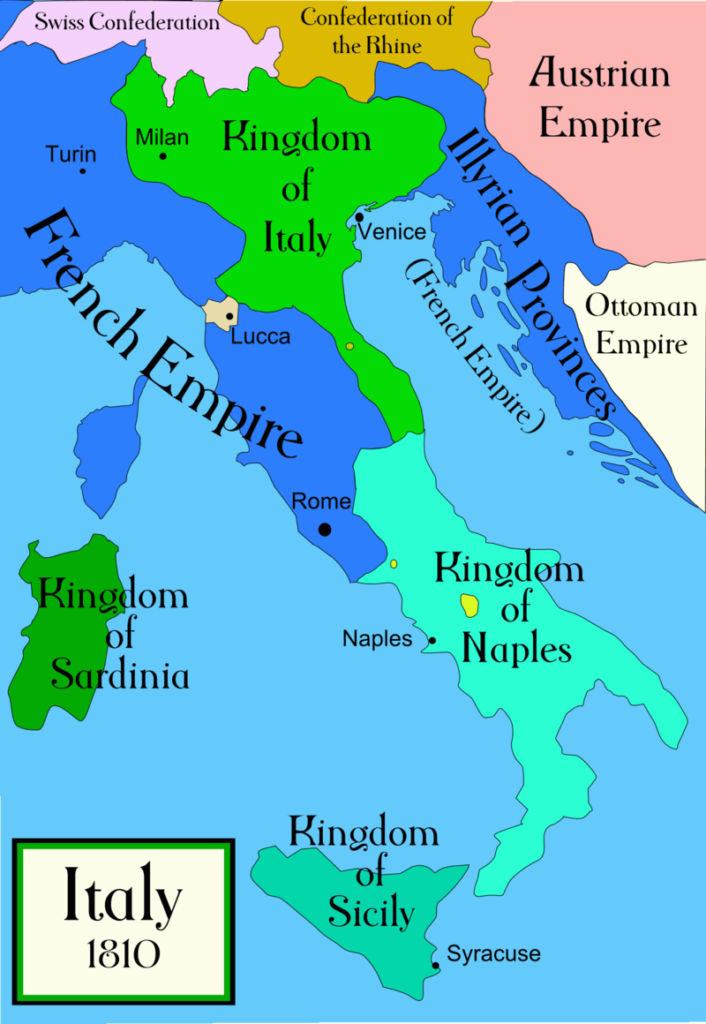
The unravelling of the Austro-Hungarian Empire and the creation of Yugoslavia
The idea of a Yugoslavia had origins both in Croatia and in Serbia, being a component of the nationalistic-leaning revolt of the XIX-th century against both empires, the Habsburg and Ottoman. Later on, the idea spread from Croatia and Serbia to Slovenia and Bosnia. In 1918, when the Austro-Hungarian Empire ceased to exist, the notion of a Slav state became reality by the creation of the Kingdom of the Serbs, Croats and Slovenes, renamed Yugoslavia in 1929 in an attempt to minimize nationalist tensions, but also in order to impose the dictatorship of King Alexander. In any case, the state newly created in 1918 was a creation of the victorious powers - France and Great Britain - who had rewarded their ally, Serbia, with numerous territories, including Voivodina - inhabited by Magyars, and Kosovo - with an Albanian majority population. The constitution established a centralised state and all major decisions were made in Belgrade, by the central government, which was dominated by the Serbian component. In reality, the new state was a grand Serbia, which gave birth to tensions between the Serbian majority and the Croats, who desired a wider autonomy. These differing visions on the state, the Serbs being favourable to the notion of a “Yugoslav nation”, while the Croats saw it only as a stepping stone towards the creation of a nation state - Croatia - fully independent, have deepened the already marked tensions at the core of Yugoslavia.
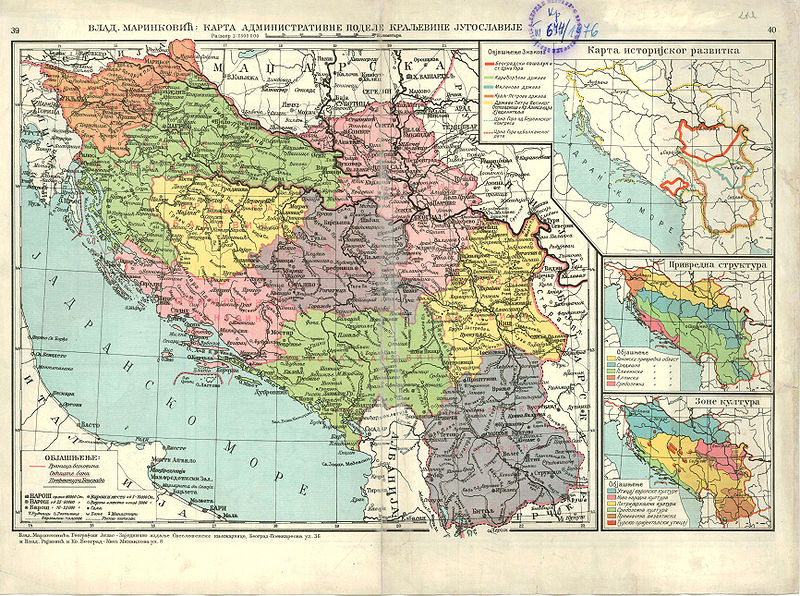
Political map of Yugoslavia showing administrative divisions in 1929
On October 9th, 1934, King Alexander of Yugoslavia was assassinated in Marseille by Vlado Chernozemski (by his real name Veliko Dimitrov Kerin), a 36 year old Bulgarian, member of a Macedonian revolutionary organisation that was fighting for the split of Yugoslavia, an organisation that had strong connections to the Ustashas, the extreme-right movement in Croatia. Vlado had been convicted to death in 1924 for the assassination of the leader of the Bulgarian communist party; he had managed to escape while being transferred from one prison to another and had since been involved in numerous bloody incidents with the Serbian police. His political allegiance and ties to the Croats were symbolic for a conflict which was to remain open well into the 90’s.
Yugoslavia and World War Two
An administrative reform took place in 1939 by which a large part of Herzegovina and South-Eastern Bosnia were transferred to Croatia, the rest of their territory being incorporated into Serbia. Both the Croats and the Serbs considered Bosnia as a natural ingredient to their national identity, the notion of some form of autonomy based on religious criteria - taking into account that the majority population in the region is Muslim - having never been taken into consideration. The big landowners, of Muslim faith, had the tendency to bunch together in urban areas, while the majority of the peasantry was primarily Serbian, which was to lead in 1991 to the Serbians’ claim that 70% of the Bosnia-Herzegovina territory belonged to them (in spite of the fact that Muslims were the majority).
On April 6th, 1941, Germany invaded Yugoslavia, which collapsed quickly. In only ten days, the Yugoslav army, numerous, but completely outdated technologically, was defeated, the cost on the German side being only 150 soldiers. On the 10th of April the Ustashas movement proclaimed the independence of Croatia, which now included Bosnia-Herzegovina, a political construct under the rule of Ante Pavelic, but which owed its existence to the support received from Berlin.
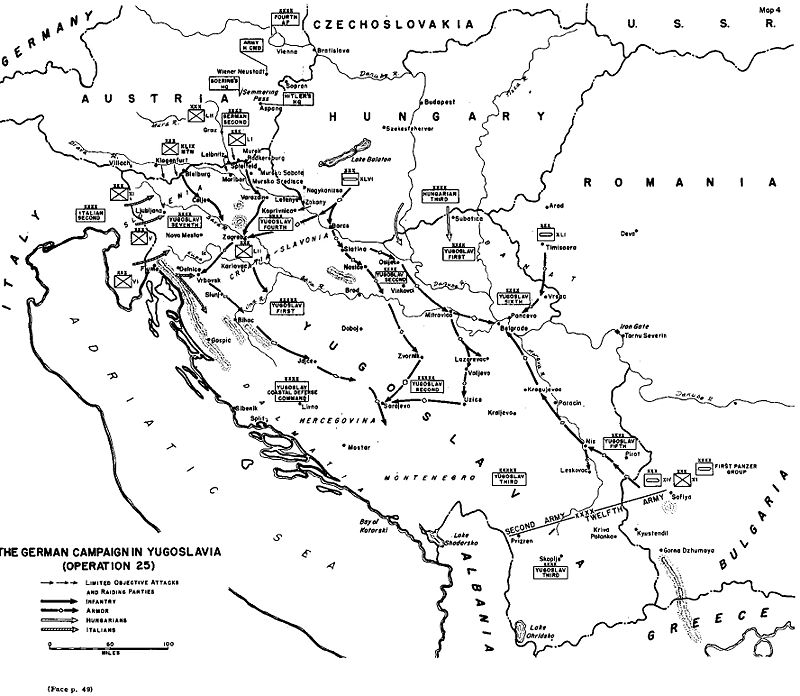
A black and white map showing the Axis invasion of Yugoslavia in April 1941 - Other information: This map was first published in November 1953 between pages 48 and 49 of the Department of the Army Pamphlet No. 20-260 Historical Study The German Campaigns in the Balkans (Spring 1941)
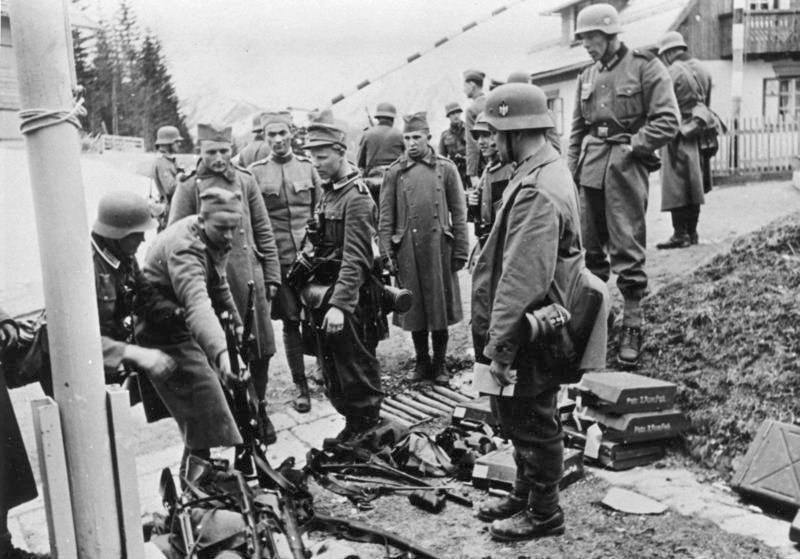
Yugoslav infantry surrendering - Bundesarchiv, Bild 146-1975 -036-24 / Gofferjé, Leander / CC-BY-SA 3.0
Years of ethnic cleansing followed, the primary targets of the Croat nationalists being the Serbians, followed by the Jews and Roma communities. According to some studies, about 30.000 people (the total size of the Ustashas movement) were responsible with the deaths of 325.000 Serbians, meaning one in every six Serbs in the newly created Croatian state. Naturally, numerous resistance movements sprung-up, the first one being the Cetnik movement, loyal to Yugoslavia (seen as a “Greater Serbia”). Another important resistance movement was that organised by the communist party, under the leadership of Iosif Broz, known as Tito - of Croatian origin - who attracted numerous followers from across Yugoslavia. (Another Croatian that joined the partisan movement led by Tito was Franjo Tudjman, future president of Croatia.)
The mountainous terrain of Yugoslavia proved favourable to guerrilla-type warfare, the Cetniks and Tito’s partisans opposing fiercely both the Ustashas and the German-Italian occupation forces. On the other hand, particularly toward the end of the war, vying for control over territory, the Cetniks and the communist party partisans led heavy fighting against each other. In September 1944 the Red Army entered Yugoslav territory and in March 1945, when the Petru Groza Government was being installed in Romania under Soviet pressure, a provisional government led by Tito was being created in Belgrade.
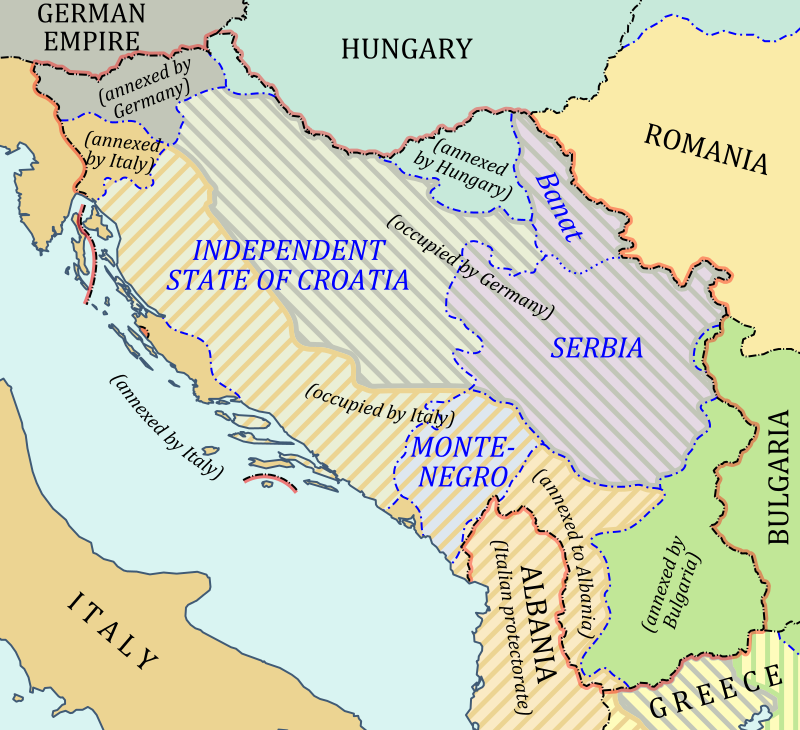
Map of Yugoslavia under Axis occupation in 1941-1943
The heritage of World War Two was a terrible one: interethnic hatred fuelled by savage atrocities from all parties involved, yet mainly led by the Ustashas, and inevitably a mistrust and deep reciprocal suspicion. Even the Croatian state of Ante Pavelic had different connotations in the collective minds: a fascist barbarity for the Serbs; an independent state, no matter how horrible, for the Croatians.
Adding to this painful historical heritage the religious rivalry and the competition for territory, many authors considered that Tito’s Yugoslavia was a volcano under interethnic pressure, ready to erupt as soon as communist control would have been removed. Others highlighted the fact that Tito, on the contrary, succeeded in maintaining something of a balance and understanding among ethnic groups. Most certainly, the bloody past was used by all parties involved in the conflict as justification; the most terrible atrocities during the war in former Yugoslavia took place in areas in which similar events had happened during World War Two also.
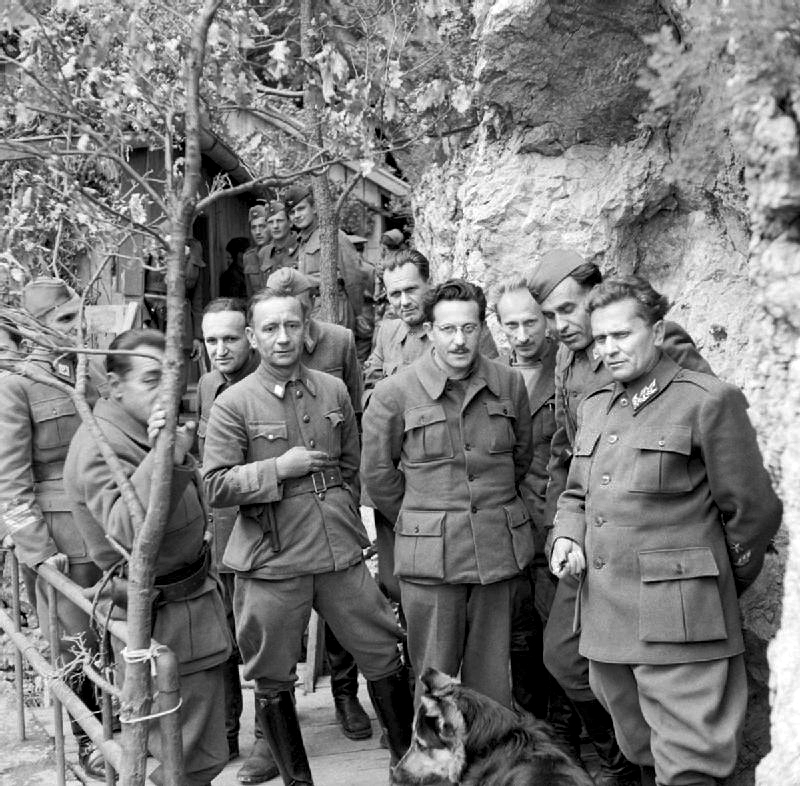
Marshal Tito during the Second World War in Yugoslavia, May 1944 - Slade, M J (Sgt) No 2 Army Film and Photographic Unit - This is photograph NA 15129 from the collections of the Imperial War Museums (collection no. 4700-39)
Yugoslavia after World War Two
The second Yugoslav state, under Tito’s leadership, adopted a federal structure, composed of six republics and two autonomous provinces. In an attempt to limit competition between ethnic groups, the internal borders were arbitrarily redrawn in a way in which, from a territorial perspective, favoured the Croatians and the Slovenians. To the disappointment of both Serbians and Croatians, Bosnia-Herzegovina, with its heterogeneous population of Croatians, Serbians, and Muslims, was granted a distinct identity, becoming a republic in the federal state, the 1974 constitution introducing the notion of “Muslim nation”. Another one of Tito’s initiatives was the creation of Macedonia, in order to dilute the Croatian and Serbian influence in Yugoslavia. Tito’s regime was characterised by interethnic peace; in spite all that, in 1980, when Tito died, there were three fundamental problems affecting the Yugoslav state.
The economy was largely inefficient, deprived of a public financing system that would homogenise the state, which resulted in substantial differences between regions. For example, the GDP of Slovenia in 1980 was double the average for the whole of Yugoslavia, while at the same time Kosovo, inhabited by a population of largely Albanian origins, had less than a third of the average. Interethnic tensions were latent, the “national problem” having remained unsolved.
Finally, the Yugoslavian state lacked institutional structures capable of dealing with the economic and foreign affairs problems which appeared during the 1980’s, institutions that should have maintained unity in the face of the nationalist centrifugal offensive. The Collective Presidency, made-up of eight members, each of them in turn being president for 12 months, was representative for the type of atypical institution introduced by Tito in order to maintain a balance between the various ethnic groups, which proved incapable of dealing with the internal and international developments. The communist system, in the views of many specialists, created the idea that politics is in fact a large conspiracy, while success is directly tied to one’s capacity to lie; maintaining power by any means was a direct reminiscence of the communist state.








